The veterinary vaccines market is estimated to be valued at USD 9.70 Bn in 2024 and is expected to reach USD 16.17 Bn by 2031, growing at a compound annual growth rate (CAGR) of 7.6% from 2024 to 2031.
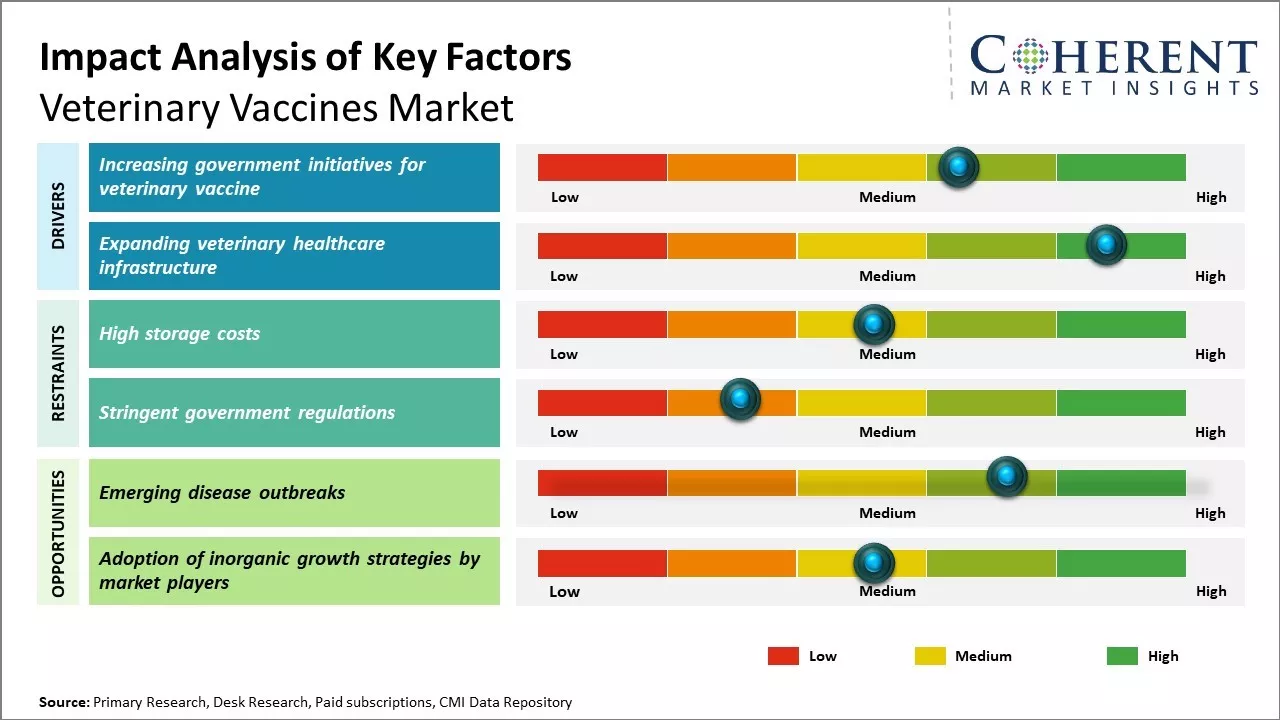
To learn more about this report, request a free sample copy
The market is expected to witness positive growth over the forecast period. Increasing pet adoption worldwide and rising awareness about animal health is expected to drive the demand for veterinary vaccines. Growing expenditure on animal health and increasing incidence of zoonotic diseases is further expected to support the market growth. Various initiatives taken by market players and government organizations to provide veterinary healthcare is also projected to boost the sales of vaccines. Wide availability of effective vaccines against various infectious diseases of livestock and companion animals along with increasing demand for vaccine from emerging economies will provide opportunities for expansion of the veterinary vaccines market globally over the coming years.
Increasing government initiatives for veterinary vaccine
Increase in government initiatives for developing veterinary vaccine such as tuberculosis vaccine are expected to propel the global veterinary vaccine market growth over the forecast period. For instance, on July 22, 2020, the Department for Environment, Food & Rural Affairs and Animal and Plant Health Agency, U.K, had given permission to scientists from the U.K. government research organization (The Animal and Plant Health) to conduct field trial for bovine tuberculosis (bTB) TB cattle vaccination. These field trials will be conducted over the next four years from 2021 till 2024 on behalf of Department for Environment, Food and Rural Affairs (DEFRA), the Welsh Government and the Scottish Government, following 20 years of ground-breaking research into bovine TB vaccines and diagnostic tests.
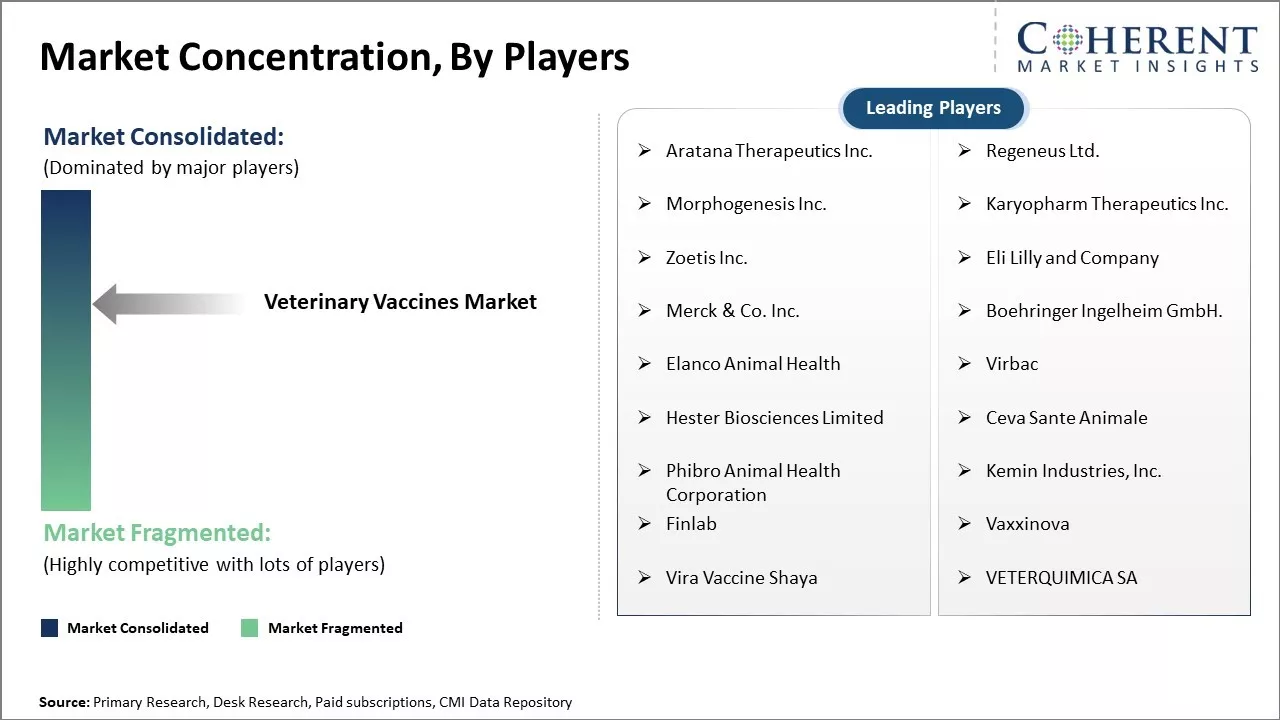
To learn more about this report, request a free sample copy
Expanding Veterinary Healthcare InfrastructureAnother driver for growth in the veterinary vaccines market is the broadening veterinary healthcare infrastructure in developing nations. In the past, animal health services were relatively underdeveloped in low and middle-income countries. However, recent years have witnessed substantial investments toward improving veterinary facilities, education, and resources. This expanded infrastructure enhances access to routine preventive care like vaccination programs nationally. It also boosts awareness about the importance of vaccinating livestock populations against zoonotic diseases transmissible to humans. Stronger veterinary systems help safeguard public health as well as agricultural development through optimized animal welfare.
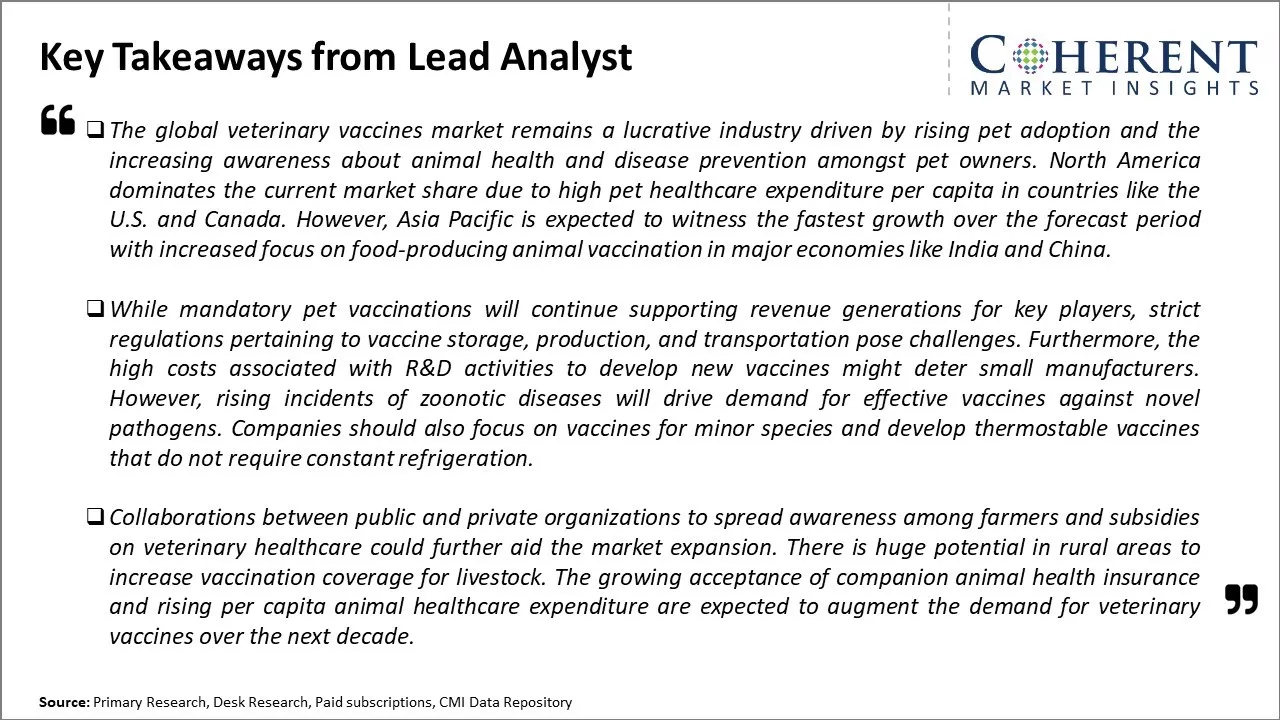
To learn more about this report, request a free sample copy
Market Challenges: High storage costsHigh storage costs and complex production processes for vaccines are expected to hamper the growth of the veterinary vaccine market during the forecast period. For instance, proper vaccine storage and handling is an important factor in preventing and eradicating various common vaccine-preventable diseases. Each year failure of storage and handling errors results in revaccination of many patients and significant financial loss is experienced due to wasted vaccines. Moreover, failure to store and handle vaccines properly can reduce vaccine potency, resulting in inadequate immune responses in patients, and poor protection against diseases.
Market Opportunities: Emerging disease outbreaks
Rising pet ownership worldwide fuels the demand for companion animal vaccines. New technologies allow tailored vaccines for customized protection. Developing nations are promising markets as livestock vaccination increases. Contract vaccine manufacturing is a growing sector. Additionally, emerging disease outbreaks prompt urgent vaccine needs, allowing competitive advantages to those able to respond quickest.
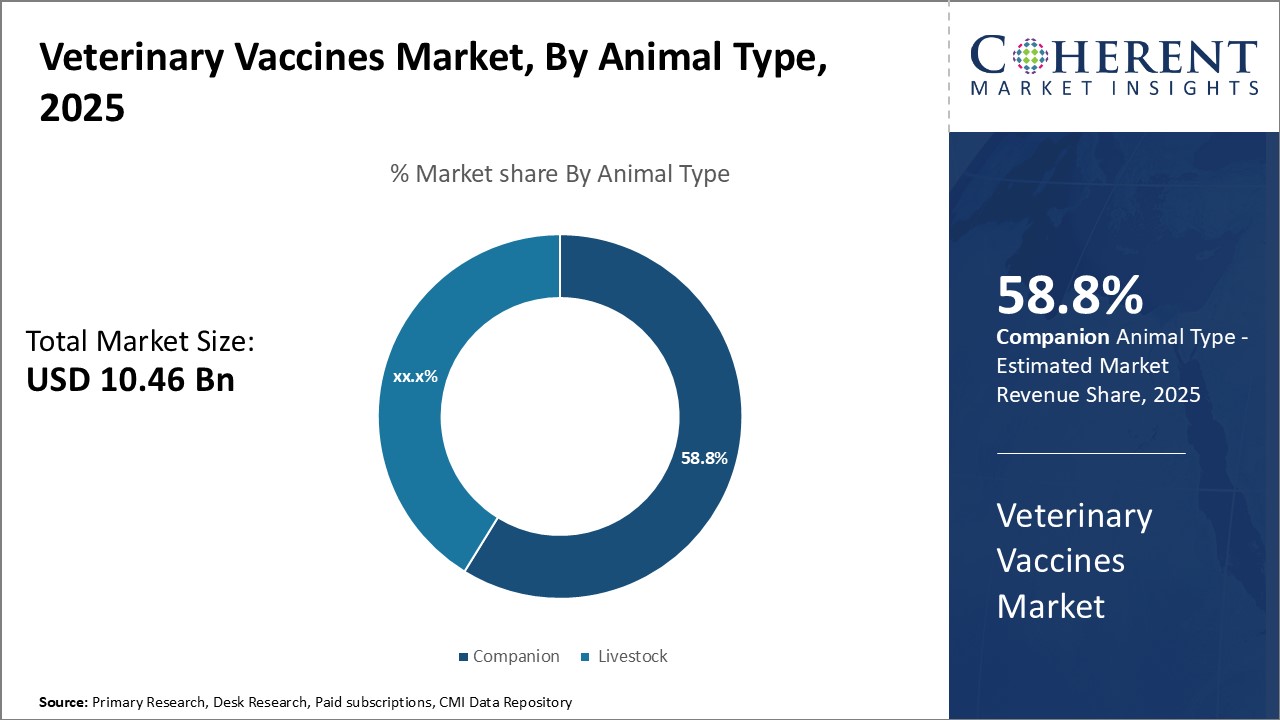
To learn more about this report, request a free sample copy
Insights, By Animal Type: Growing Livestock Industry Drives Demand for Veterinary VaccinesThe animal type segment includes livestock and companion. Livestock contributes the highest share of the veterinary vaccines market and is projected to hold 58.3% of the market share in 2024. Vaccines play a critical role in safeguarding productivity and profitability of the meat, dairy, and poultry industries by shielding animals from common illnesses. Mass vaccination is routinely employed to combat pathogens like foot-and-mouth disease virus, avian influenza virus, swine influenza virus that threaten livestock populations. Endemic infections can wipe out entire herds if left unchecked, highlighting the business imperatives for immunization. Farmers depend on steady vaccine supplies to protect their investment and meet the rising global demand for animal proteins. Regulatory support and manufacturing standards have further increased access and reliability of veterinary biologics for large-scale livestock farms. These factors together ensure the sustained importance of vaccines in commercial livestock production systems.
Insights, By Technology: Increasing out-of-hospital cardiac arrests drives external veterinary vaccines
The product type segment includes inactivated vaccines, toxoid vaccines, live attenuated vaccines, subunit and DNA vaccines, and recombinant vaccines. Live attenuated vaccines segment is anticipated to hold 36.8% of the market share in 2024. Live attenuated vaccines mimic natural infection by using a weakened form of the disease-causing pathogen that cannot multiply in the body or cause disease. They trigger long-lasting immune response in animals by closely mimicking natural infection. As they are genetically similar to wild-type pathogens, they induce both cellular and humoral immunity which provides strong protection. Their ability to induce a self-limiting infection allows for durable immunological memory to develop. Unlike inactivated vaccines, they require only one or two doses to confer lifelong immunity making them very cost-effective. Being non-toxic yet highly immunogenic makes them well-suited for mass vaccination programs in livestock. Their ease of administration also supports large-scale usage. While they pose minimal health risks, necessary quality control and handling precautions are maintained to prevent reversion to virulence. Widespread usage of live attenuated vaccines for rabies, distemper and influenza reflects their acceptance as a reliable technology.
Insights, By Route of Administration: Ease of Administration Drives Subcutaneous Injection Growth
The route of administration segment includes subcutaneous injection, intramuscular injection, intranasal administration, and others. Subcutaneous injection contributes the highest share of the veterinary vaccines market and is projected to hold 43.2% of the market share in 2024. Subcutaneous administration enables easy self-administration or assistance by a non-medical person. It causes minimal discomfort to animals as the thin layer of fat beneath the skin forms an absorption site for vaccines. The risk of accidental needle injuries is also reduced compared to intramuscular injections which require precision. Subcutaneous vaccines tend to have fewer local reactions and are more acceptable to pet owners. Advances in formulation technologies have enhanced stability of some vaccines when delivered via this route. It has emerged as a practical option for implementations such as core vaccinations in veterinary clinics or emergency disease outbreak operations that require mass administration. With training and suitable products, subcutaneous delivery offers convenience without compromising efficacy, factors that have increased its popularity among vaccine makers and end users.
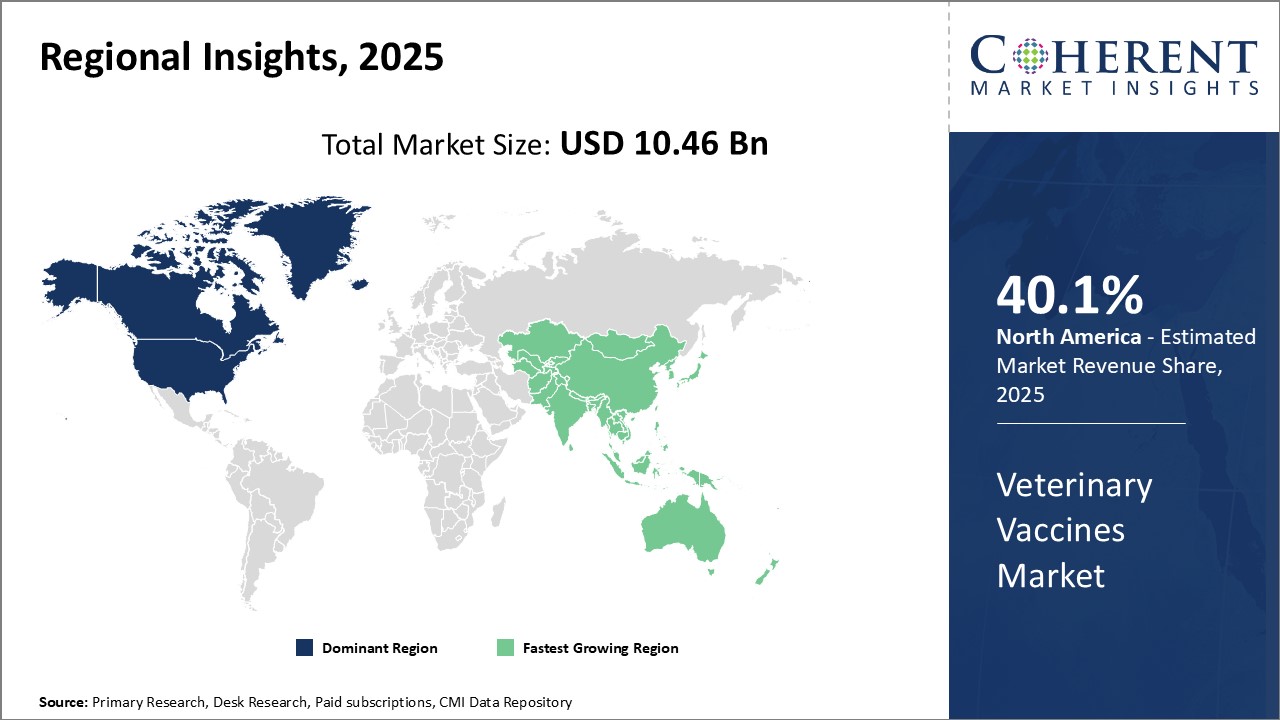
To learn more about this report, request a free sample copy
North America has established itself as the dominant regional market for veterinary vaccines and is expected to hold 39.6% of the market share in 2024. With a strong presence of leading vaccine manufacturers and high pet ownership rates, the U.S. and Canada account for the majority of sales. Regulatory approvals are well-established in the region, allowing for a steady pipeline of new product launches yearly. Additionally, North American veterinary practices have deeply ingrained vaccine administration protocols. Combined with large procurement budgets of major buyers like veterinary hospitals and purchase alliances, stable and sizable demand is assured for suppliers. Some key vaccine categories where the region leads include core diseases like rabies, as well as emerging niche segments pertaining to canine and feline therapeutic applications. Export activity from North American players also contributes to their regional supremacy.
Among the fastest growing regional markets for veterinary vaccines is Asia Pacific. Rising pet ownership in China and India due to growing affluence as well as a cultural shift toward companion animals is fueling vaccine requirement. The massive scale and sheer number of livestock heads across Southeast Asian nations translates to huge volume potential as well. While regulatory structures and standards are still developing, regional vaccine manufacturing capacities are being established or expanded through partnerships and foreign direct investments. This allows for vaccines to be produced and priced more competitively versus imports. Local manufacturing also overcomes past constraints around reliable supply and cold chain management. Nations like Thailand and Indonesia have emerged as regional export hubs, where vaccines manufactured onshore are distributed farther afield within Asia Pacific and beyond. With continued economic expansion projected across multiple high-growth countries, the Asia Pacific region is viewed as prime for sustained double-digit percentage increases in veterinary vaccine consumption over the medium term.
Veterinary Vaccines Market Report Coverage
| Report Coverage | Details | ||
|---|---|---|---|
| Base Year: | 2023 | Market Size in 2024: | US$ 9.70 Bn |
| Historical Data for: | 2019 To 2023 | Forecast Period: | 2024 To 2031 |
| Forecast Period 2024 to 2031 CAGR: | 7.6% | 2031 Value Projection: | US$ 16.17 Bn |
| Geographies covered: |
|
||
| Segments covered: |
|
||
| Companies covered: |
Aratana Therapeutics Inc., Regeneus Ltd., Morphogenesis Inc., Karyopharm Therapeutics Inc., Zoetis Inc., Eli Lilly and Company, Merck & Co. Inc., Boehringer Ingelheim GmbH., Elanco Animal Health, Virbac, Hester Biosciences Limited, Ceva Sante Animale, Phibro Animal Health Corporation, Kemin Industries, Inc., Finlab, Vaxxinova, Vira Vaccine Shaya, and VETERQUIMICA SA |
||
| Growth Drivers: |
|
||
| Restraints & Challenges: |
|
||
*Definition: The veterinary vaccines market involves products such as live attenuated vaccines, inactivated vaccines, recombinant vaccines, and toxoid vaccines that are administered to animals to prevent them from getting infectious diseases. Veterinary vaccines help protect pets and livestock from viral and bacterial diseases and keep animals healthy. Common veterinary vaccines target diseases like rabies, bordetella, leptospirosis, parvovirus, and distemper.
Frequently Asked Questions
Joining thousands of companies around the world committed to making the Excellent Business Solutions.
View All Our Clients